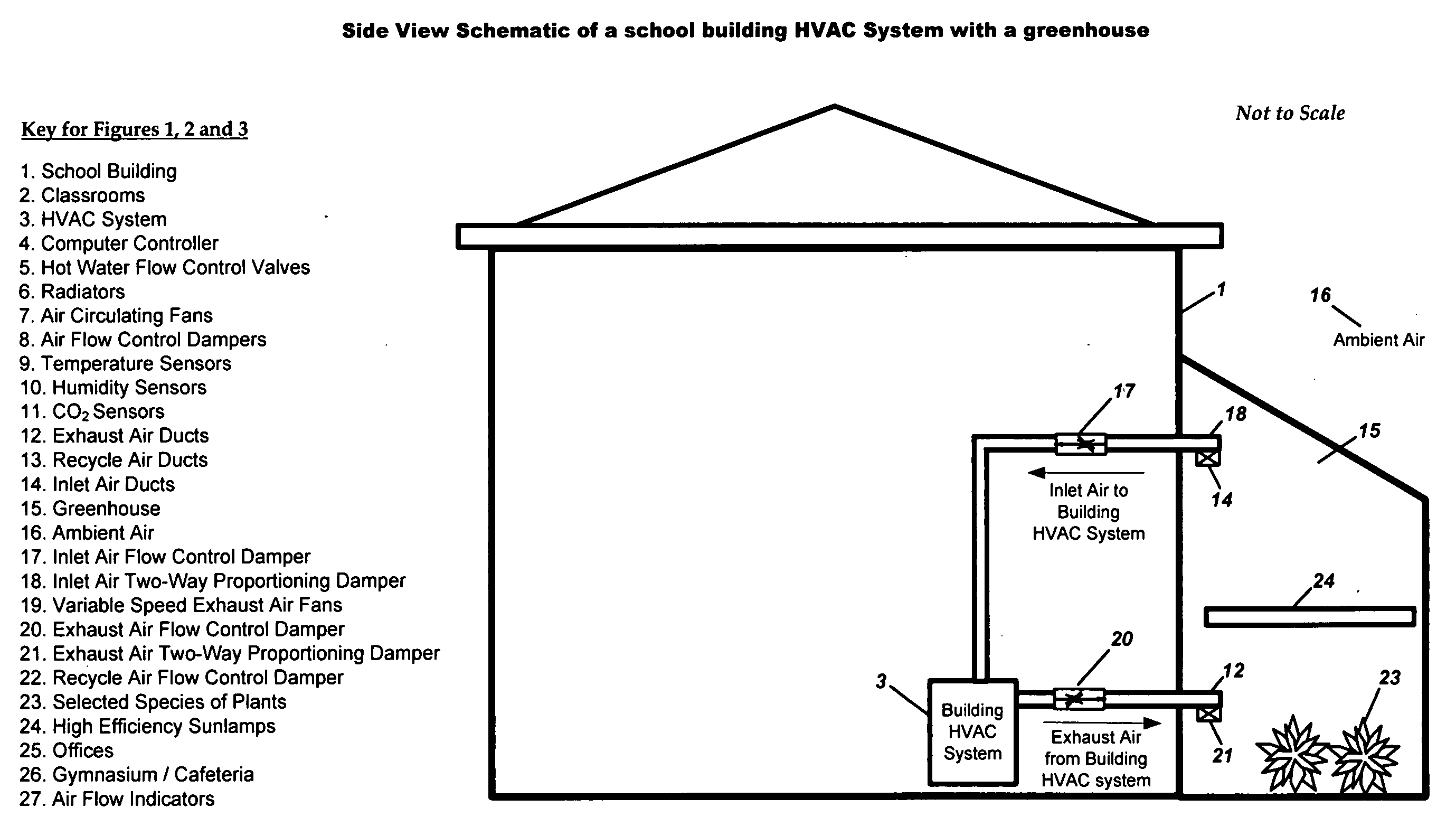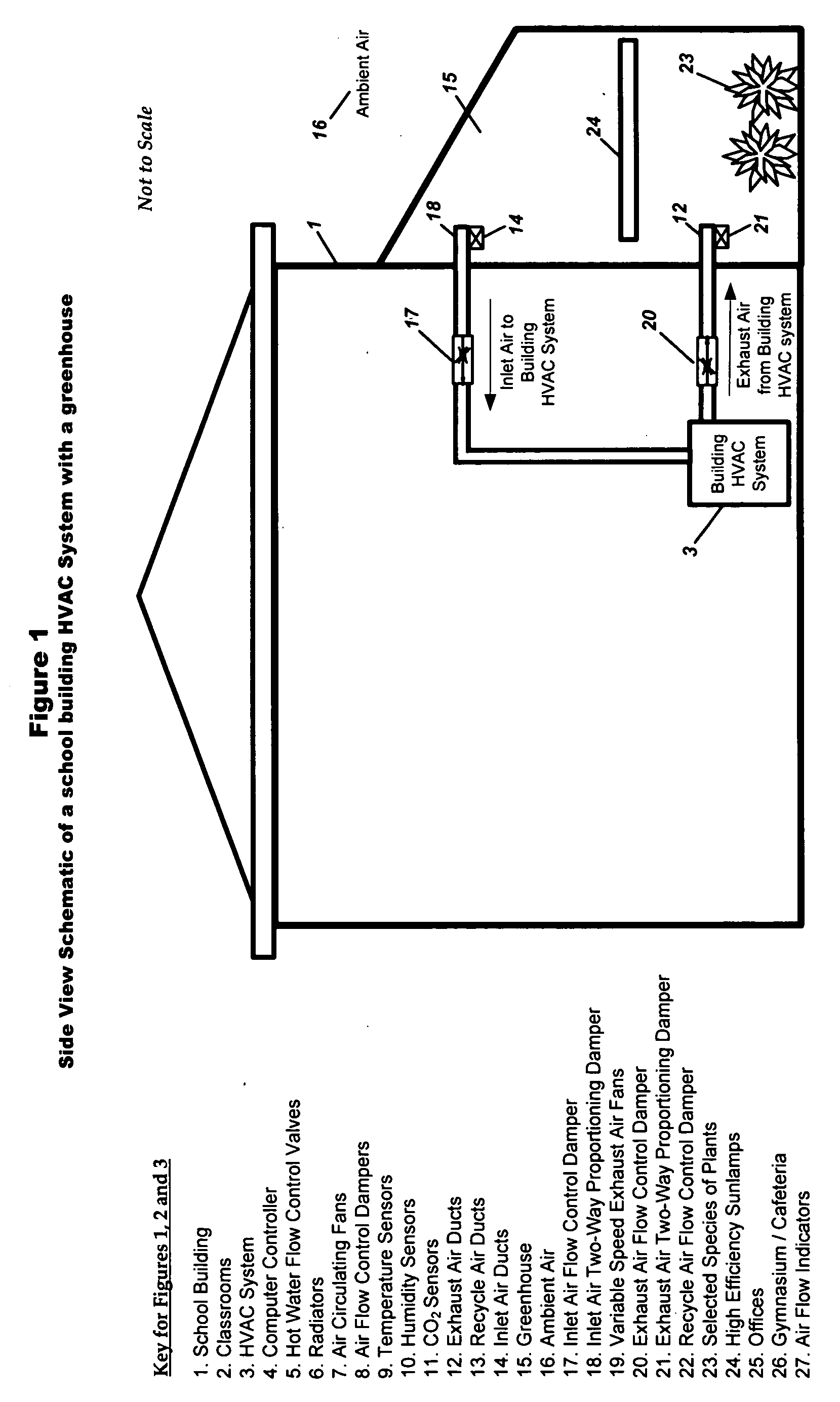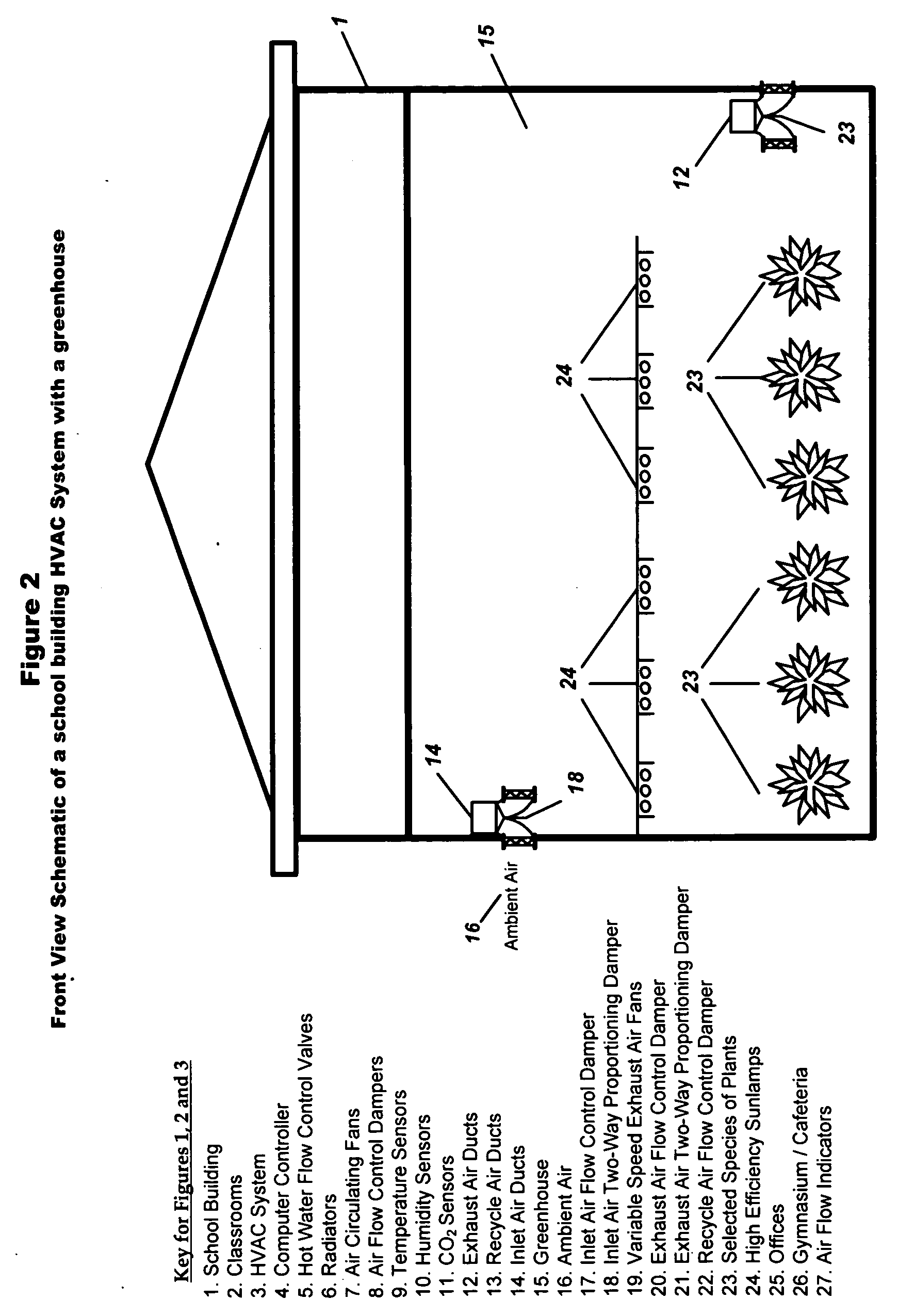System for improving both energy efficiency and indoor air quality in buildings
a technology for applied in ventilation systems, lighting and heating apparatuses, heating types, etc., can solve problems such as unhealthy conditions, increased concentration, and difficulty in adjusting ventilation, and achieve the effect of improving indoor air quality and energy efficiency
- Summary
- Abstract
- Description
- Claims
- Application Information
AI Technical Summary
Benefits of technology
Problems solved by technology
Method used
Image
Examples
Embodiment Construction
[0026]Using a school building as one example of a type of structure that can be used in the preferred embodiment of this invention, refer to FIGS. 1, 2, 3, 4a, 4b, 5a, 5b, 6a, 6b. For a school building (1) starting on Monday morning during the heating season, the empty classrooms (2) would be at a lower temperature and humidity with minimum circulating air flow. The building air circulation rate, the exhaust air rate and the inlet air rate of the HVAC system (3) would be minimal with low energy consumption. At a preset time before school starts, the computer controller (4) signals the HVAC system (3) to adjust the hot water flow control valve (5) to increase the flow of hot water to the radiators (6) to raise the temperature in the classrooms (2). At the control hot water flow rate, the temperature in the classrooms (2) is below the target value. As teachers and students arrive and the room is being occupied the temperature, humidity and CO2 in the classroom (2) will increase due to...
PUM
 Login to View More
Login to View More Abstract
Description
Claims
Application Information
 Login to View More
Login to View More - R&D
- Intellectual Property
- Life Sciences
- Materials
- Tech Scout
- Unparalleled Data Quality
- Higher Quality Content
- 60% Fewer Hallucinations
Browse by: Latest US Patents, China's latest patents, Technical Efficacy Thesaurus, Application Domain, Technology Topic, Popular Technical Reports.
© 2025 PatSnap. All rights reserved.Legal|Privacy policy|Modern Slavery Act Transparency Statement|Sitemap|About US| Contact US: help@patsnap.com



